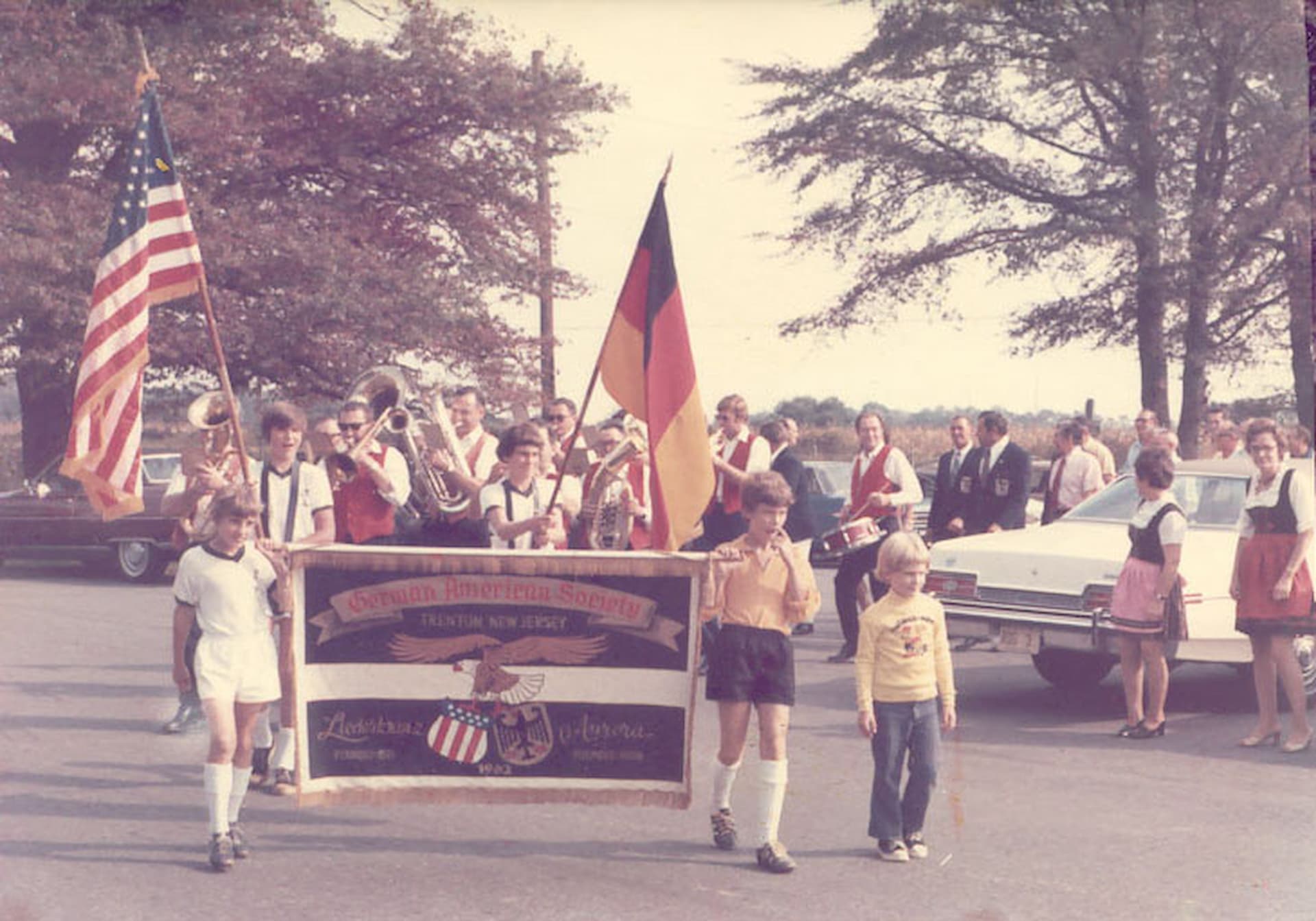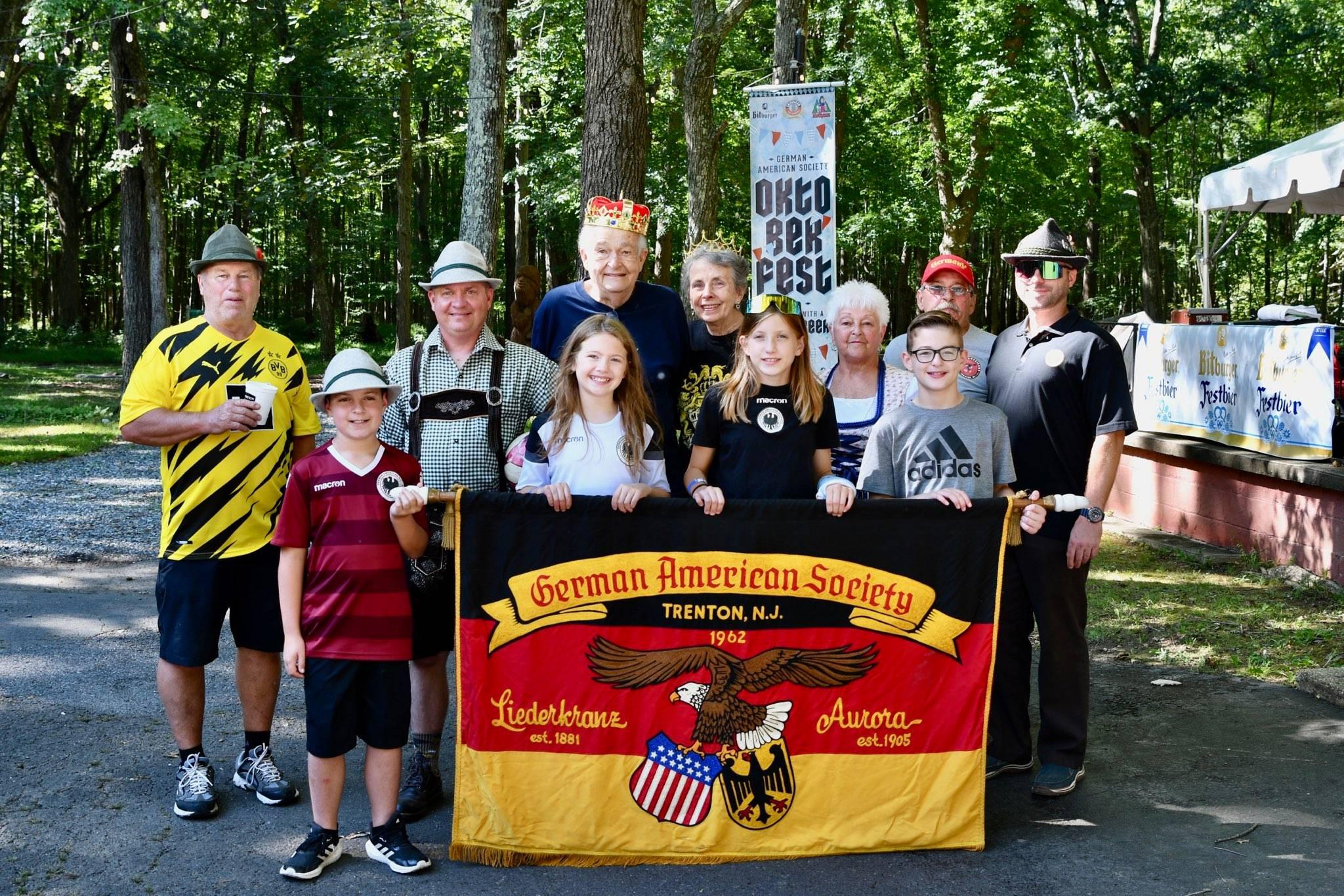History
Learn even more of the history of the German-American Society of Trenton and it’s origins.
Our History

Most of the German population in Trenton, around the turn of the century, made their homes in Chambersburg, the southern part of the city. It can only be speculated at this point but it is probably that their search for identity and the longing to preserve the German language and heritage brought about the foundation of a strictly German club of brotherhood. On November 6, 1881, through the efforts of 10 concerned men, the “Liederkranz Trenton” was born. Even though it was a club in name only, without a home or hall to function in, attempts were made soon after, with the help of other local small German organizations to acquire a building which could be shared by all of these different groups. A “Hall Association” was formed, with a Board of Directors in charge, consisting of one member of the various factions. Their main goal: Sell shares and collect enough money this way to eventually be able to buy or build a hall. This finally came about on January 22, 1888, when the dedication of the “Liederkranz Halle”, located on South Clinton Avenue, took place. The new building became the home of the many local German associations and clubs, of which each one was part owner.
A steady influx of new members swelled the ranks of this singing and social society, “Liederkranz”, so that by the year 1899 the membership roster showed a total of 109 active members. The stage of the “Liederkranz Halle” was the focal point of social life for the German population of Trenton, offering theater performances, concerts, dances, etc.
The continued flow of new arrivals from the “Old World” kept up for many years, increasing the membership and giving the “Liederkranz”, as well as other German organizations not only the necessary strength in numbers but also new ideas in management. This movement continued until the approaching war in 1914 reversed the trend, when immigration came to a stand-still. Even though certain curtailments of life, as a German society within a country at war with Germany were necessary, the routine and the function of the “Liederkranz” never ceased during the war years. During the post-war period the main goal of the membership became a humanitarian effort, by sending through the Red Cross urgently needed money and clothing packages to the German prisoners of war and the civilian population in Germany, as well as in Austria.
The year 1924 saw the return of new arrivals to this country and the city, bringing with them new vigor and sorely needed manpower. Again the “Liederkranz” started to flourish, picking up where it had left off 10 years earlier. Singing still was the main activity in these days and giving concerts, often involving traveling to different cities, were the highlights on the social calendar.
In 1930, with Germany suffering from one of the worst economic depressions, more immigrants sought refuge in the Americas, strengthening further the membership and also, for the first time, expressing their love for the native sport, soccer, by forming a team, aptly named “Trenton Liederkranz”, competing with other local teams as well as European teams in Philadelphia. More importantly, however, it added another dimension of activity to the club’s social functions, with which the younger generations could easily identify. However, club activities virtually came to a halt once again in late 1930’s, as a result of yet another approaching war in Europe.
As in the post-war period of the first world war, the German community once again banded together to help the civilian population in their home countries. The “Liederkranz” collected and sent considerable amounts financial help and, through the 3 permanent delegates at the “Relief for Austria and Germany Committee” were able to dispatch countless food packages and badly needed clothing to families overseas, whose names were supplied by organizations, such the Red Cross, etc. This period of time must be considered one of the finest in the club’s history.
The year 1950 again started with an acceleration of arriving new immigrants. First the displaced Germans from the Balkans, Romania, Hungary, etc. and later when restrictions were more relaxed a repetition of the post-war era of the first world war, saw a heavy influx of young Germans from virtually every corner of Germany. Again, their main interests were sport oriented and it is no wonder then that in a relatively short period of time another soccer team was formed, which should be considered the forerunner of today’s G.A.K. with many former players still being active either directly as managers, coaches, etc. or in important positions of club leadership.
The sentiment to have just one German-American Society, united within the city was especially strong and prevalent among the many new arrivals, some of whom already were part of the power structure and had proven to be trustworthy and knowledgeable leaders.
Even though the idealistic goal of complete and total unification was never achieved, a milestone in the chronicles of 2 clubs could be written when on July 12, 1962, after long and difficult deliberations the “Aurora” a club founded in 1905 by German – Hungarians and the “Liederkranz” merged into the ”German American Society.” Both presidents, Adam Basler of the “Aurora” and Josef Dinger of the “Liederkranz” were made Honorary Presidents on the day of mergers, in recognition of their tireless efforts for the unification.

The year 1969 saw the last of the important milestones in the history of German-American Society” come true. It was decided to pool all human and financial resources and build a new clubhouse with the necessary soccer field and picnic grounds. Groundbreaking took place on October 10, 1969. The grounds, consisting of 18 acres, had been purchased previously (through membership shares). Two years later, through the combined efforts and diligent work of many dedicated and loyal club members, the “German American Society” finally had a new permanent home. . . on Uncle Pete’s Road.
In 1992 the club opened its membership to women for the first time. Until then they could only be active in the club as part of the Ladies Auxiliary.

Today the German American Society is the center of many activities and social functions, not only for its own membership, but do to its attractive and well maintained appearance and its generous size, to many outside organizations as well. While soccer is dominating the sport scene with several boys’ and girls’ teams as well as a mens’ team, the club’s inner activities range from dancing and mixed choir instructions to a German language class. The club itself, as part of its progressive entertainment program, has hosted many international stars within its hall for the enjoyment of its members and public at large.
The German-American Society of Trenton, NJ, is the largest German Club of Central New Jersey with a large program of events year-long.
